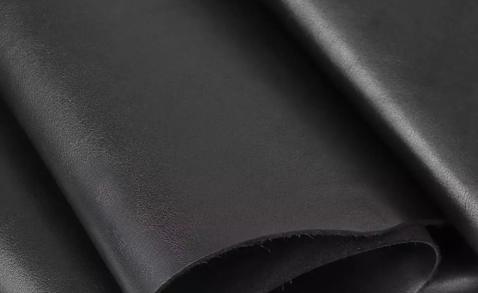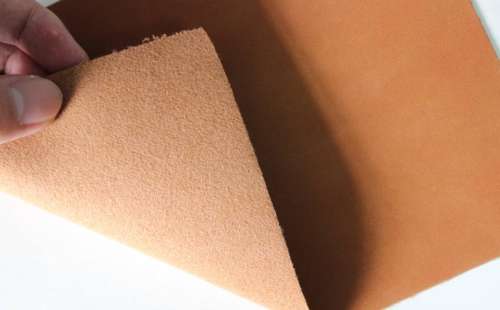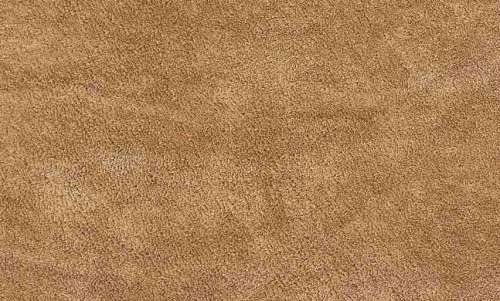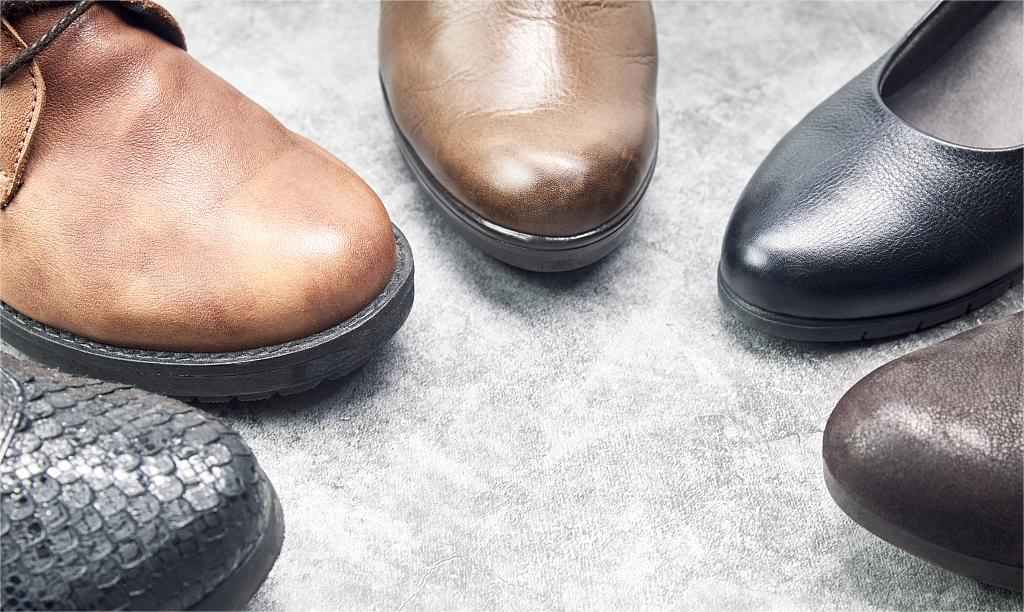Full-grain Leather, Nubuck, and Suede form the basis of the leather footwear. There is a higher chance that if you are looking to buy new boots they are most likely made from these three materials. However, which is the right material for you? There are many things to take into consideration when comparing Suede vs Leather or Suede vs Nubuck.
Things like how frequently you would want to wear them, which environment you would want to wear them, and how much effort you would want to put into them to keep them in good shape. Luckily in this article, we have researched for you!
What Is Full Grain Leather?

Characters of Full Grain Leather
Full-grain leather is seen as the most genuine and the highest quality form of leather. It is made from the toughest and outermost part of the hide, making it the most durable type of leather.
This layer is not sanded to make it smooth or remove imperfections. It retains the natural texture and original markings on the animals’ skin.
This leaves behind a material that showcases the original beauty of the skin including marks, blemishes, or wrinkles giving each skin a unique look.
The breathability characteristic of full-grain leather allows it to gradually have a rich patina making it more attractive.
Usages Of Full Grain Leather
Full-grain leather comes in different types. Each type is made from various animal hides like pigskin, buffalo and cowhide.
These varieties have different textures, finishes, and thicknesses used for various applications and preferences. Full-grain leather is used in making high-quality products like luxury bags, upholstery, belts, shoes, and wallets.
It extends to furniture where it is used in the making of sofas and chairs due to its aesthetic appeal and long-lasting texture.
Pros And Cons Of Full Grain Leather
Pros
- Aesthetic appeal: Full-grain leather preserves natural markings, giving each item a unique look.
- Durability: Full-grain leather is resistant to wear and tear and highly durable.
- Breathability: It allows air to circulate and prevent the buildup of moisture.
- Graceful aging: A patina develops on full-grain leather over time enhancing its beauty.
- Strength: The fibers offer resilience and strength on the top grain.
Cons
- Expensive: Full-grain leather is very expensive as compared to other leather due to its high quality.
- Not fully perfect: The markings on the leather may be viewed as flaws although they make the material unique.
- Maintenance: It needs a lot of care to maintain its durability and beauty.
Full Grain Leather Care And Maintenance Tips
Care Guide
- Conditioning: Use a leather conditioner to keep it supple and prevent cracking or drying.
- Frequent cleaning: The leather should be wiped with a soft wet cloth to remove dirt.
- Dry in the shade: Exposing full-grain leather to direct sunlight leads to drying and fading.
Maintenance
- Storage: Keep the leather products in a cool dry area to prevent the growth of mildew and mold.
- Keep leather away from water: Water damages leather. Quickly wipe off spills.
- Clean leather products professionally for extensive wear and stubborn cleaning.
Special notices
- Avoid strong chemicals: Strictly use leather-specific products.
- Natural aging: Don’t be bothered by natural aging, it adds beauty to the full-grain leather.
What Is Nubuck?

Characteristic Of Nubuck
Nubuck is a kind of leather that has been buffed on the grain part to make a soft surface. This sanding gives Nubuck a unique texture almost like suede but finer.
The leather used for Nubuck can come from animal hides like sheepskin or cowhide. One major characteristic of Nubuck is its costly appearance like that of brushed velvet.
Nubuck leather has a velvety texture and a matte finish. Nubuck is manufactured by sanding the outer layer of the leather to create a smooth texture.
This improves the softness of the material and gives it a unique grain pattern. The texture of Nubuck vs suede is finer making it last longer and wearproof.
Pros And Cons Of Nubuck
Pros
- Attractive look: Its velvety texture and matte look gives it a sophisticated and expensive look.
- Comfortable: It is soft making it comfortable to touch and wear.
- Long lasting: Nubucklasts longer than suede. making it used in various appliances.
- Breathability: Just like full-grain leather, Nubuck enables air circulation, which offering comfort to the feet.
Cons
- Prone to stains: It is easily stained making it harder to clean.
- Needs frequent maintenance: Nubuck requires frequent care to maintain its looks and prevent wear and tear.
- Easily scratched: Despite it being more durable as compared to suede, it can easily be scratched so it needs extra care.
Care And Maintenance Tips For Leather Boot
Cleaning
- Brush the material frequently: ensure you use a soft brush to remove dirt and dust from the surface to maintain the Nubuck's appearance.
- Spot clean: Clean stains immediately using a Nubuck cleaner or with a solution of soap and water. Make sure that you first test in a hidden Nubuck
Protection
- Waterproofing: Use water and stain repellent that is made specifically for Nubuck material to offer protection against stains and moisture.
- Dry under a shade: Direct and prolonged exposure to sunlight can fade Nubuck.
Maintenance
- Conditioning: Use a conditioner specifically for Nubuck leather to keep the material soft and keep it from drying and cracking.
- Proper storage: Store the Nubuckboots in a properly ventilated area and insert shoe trees to maintain their shape.
What Is Suede?

Characteristics of Suede
Suede has a napped finish and is obtained from the underpart of animal hides specifically from goat, calf, or lamb. The word suede is derived from the French term “Gants de Suede” which means “Gloves from Sweden”.
This is the place where suede was first used. Unlike full-grain leather suede’s surface is known for its smooth, velvety texture made by buffing the hide's inner layer.
Appearance And Texture Of Suede
Suede has an elegant and rough texture that makes it different from other types of leather. The nap is created by sanding the leather creating a surface with a significant fuzziness.
This gives it a unique look that is both casual and refined making it a popular choice for some fashion items.
Advantages And Disadvantages Of Suede
Advantages
- Softness: Suede is known for its supple and soft texture giving it a comfortable feel on the skin.
- Costly look: The velvety look of suede gives it a unique look on fashionable items like bags, boots, and coats.
- Breathability: Suede is by far more breathable as compared to Nubuck or full-grain leather offering comfort in different environments.
Disadvantages
- Easily stained: Suede is absorbent making it easily destroyed by water and stain. Moisture and spills can leave permanent marks.
- High maintenance: Suede should be carefully maintained to maintain its looks and requires special cleaning methods.
- Fading: Suede fades gradually especially when exposed to direct sunlight making it lose its original color.
Care And Maintenance Tips Of Suede Boots
Cleaning
- Brushing: Always use a soft brush to remove dirt and preserve the nap. Make sure that you gently brush in the direction of the fibers.
- Spot cleaning: You can use a suede eraser to remove stains or a wet cloth with some soap. Do not saturate the suede.
Special care
- Waterproofing: Use a suede protector spray to resist water and prevent spills or stains. Do this after cleaning.
- Store suede boots in a cool and dry place away from direct sunlight.
- Professional cleaning: Take your suede boots to a professional cleaner when you have stubborn stains.

Suede vs Nubuck vs Leather: What Are The Differences?
Suede, Full-grain leather, and Nubuck are different types of leather each with special characteristics that are visible in their appearance and texture.
We will look at the common differences that people should know in their daily lives.
Suede is created from the underside of the animal hide. It has a velvety and soft texture with a matte finish. It is ideal for fashion items like jackets and gloves, but less suited for heavy-duty applications.
Nubuck is similar to Suede but comes from the outer layer of the hide, giving it a finer texture and slight nap. Its appearance is more polished than suede. It is softer than Full-grain Leather but durable than Sudue, making it suitable for various applications like footwear and accessories for everyday use.
Full-grain leather, on the other hand, is not sanded but maintains the natural look of the hide. The surface is more rugged maintaining the imperfections of the hide. Full-grain leather is renowned for its durability and adaptability, gaining a distinct patina over time. It is perfect for high-quality products such as belts, wallets, and durable full-grain leather boots.
Which One Is The Best Leather?
Choosing the “best one” between full-grain leather, Nubuck, and suede is fully dependent on your specific needs, style, and personal choices.
Each material is unique and comprehending these variations will help you make a decision.
Nubuck leather has been sanded on the grain side. It has a luxurious look and is soft with a slight nap. It is softer than full-grain leather, however, it is more susceptible to staining and water damage.
Full-grain leather is created from the whole grain with the hide's natural markings. It is highly durable and ages well. However, it is the most expensive type of leather. Also, it is stiff so it requires a longer break in period.
Suede is created from the innermost layer of a hide giving it a napped and soft surface. It is comfortable and lighter than full-grain leather. However, it is more prone to stains and needs extra protection and care.
When choosing your type of leather consider its intended use, the level of maintenance, budget, and style. The best leather depends on your taste and preference.
For durability and aesthetics, full-grain leather is a good choice. For style and luxury, Nubuck is the way to go. For comfort, softness, and casual use suede might be a solid choice.
Conclusion
In summary choosing between suede vs leather, and suede vs Nubuck is largely dependent on the intended use of the leather product, budget, and your preferences.
As mentioned, full-grain leather is popular for its durability and natural aesthetics, Nubuck gives you a resilient and attractive choice while suede on the other hand offers you a stylish and soft option.
Understanding the main difference between these different types of leather enables you to make an informed decision and choose the perfect type of leather for your requirements.
